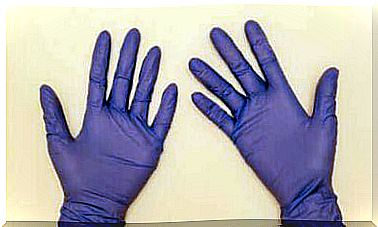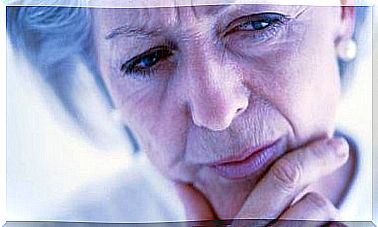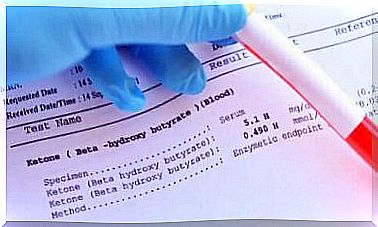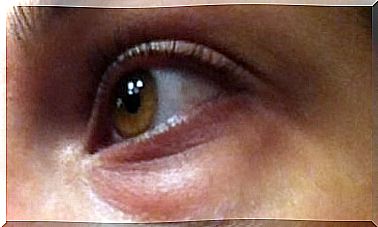Learn How The Body Is Affected By Pneumonia
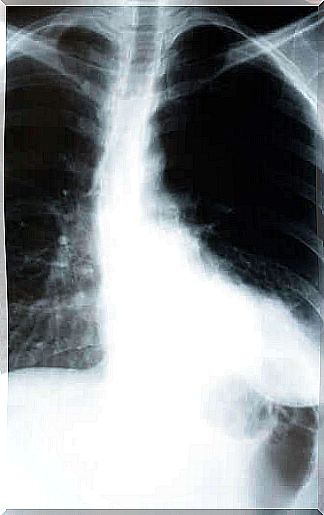
Pneumonia is an infection that affects the alveoli in the lungs. These are small blisters covered by blood vessels that carry out the gas exchange. In other words, they are responsible for expelling carbon dioxide (CO2) and capturing oxygen from the outside. This is why the question of how the body is affected by pneumonia is so important – because this gas exchange is such an important process.
It is estimated that there are 2 to 10 cases of pneumonia per 1000 inhabitants per year. Of these cases, between 20 and 35% must be admitted to hospital. In patients with other diseases, the mortality rate is 1%, but it can increase to 40% in inpatients, especially those in the intensive care unit. Depending on the patient’s situation, pneumonia can be fatal.
In this article, we will explain the process your body goes through from the moment the infection occurs, right up until the disease occurs. By doing this, we reveal how the body is affected by pneumonia.
Everything about how the body is affected by pneumonia
Pneumonia is the consequence of two separate conditions that occur simultaneously:
- The arrival of microorganisms in the alveoli and the subsequent spread of them.
- An inflammatory response from the host, which will condition the clinical manifestations and severity of the disease.
How do these microorganisms reach the lungs?
Bacteria, viruses, fungi and parasites are all capable of causing pneumonia, but bacteria and viruses are usually the culprits. At present, experts are identifying more and more viruses and other causes of pneumonia. There are two types of pneumonia that can occur:
- Pneumonia due to a viral infection: this is called primary pneumonia. For example, pneumonia associated with SARS-COV-2 (COVID-19) falls into this category.
- Bacterial pneumonia after a viral infection of the respiratory tract. Bacterial pneumonia, for example, is a common complication of the flu.
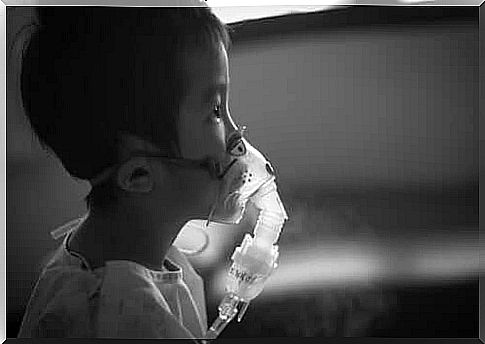
Our airways are constantly exposed to microorganisms. Bacteria, viruses and other microorganisms can form colonies in the lungs in the following ways:
1. By inhaling microorganisms in the throat
Our respiratory and digestive systems are closely linked thanks to the pharynx. The pharynx connects the nose and mouth to the larynx ( respiratory system ) and esophagus ( digestive system ).
After the food we ate has passed through the throat, it should only enter the esophagus. At the same time, only air can enter the larynx. Therefore, we have a structure known as the epiglottis, or larynx, which closes the larynx and carries food to the esophagus.
All of us have bacteria and sometimes even viruses in the nasal or oral cavity that usually do not cause harm. S trupehodet, trachea, bronchi and lungs, however, must remain sterile. In other words, they should not contain any microorganisms, as this can lead to an infection. Therefore, as we have explained, only air must enter the larynx.
While we sleep, the muscles in the throat and larynx relax, which can cause microaspirations to take place. This refers to small amounts of saliva, food, or the like going from the throat to the larynx. These microaspirations may contain microorganisms which, once they have passed through the larynx, reach the lungs. This is the mechanism that occurs in the vast majority of people who develop pneumonia, as well as in healthy people without disease.
At the same time, there are some who do not have sufficient control over the larynx. This causes large amounts of food, drink or saliva to enter the larynx. As a result, colonization occurs in their lungs.
2. Spread by inhalation
People regularly inhale small amounts of microorganisms from the air, which can reach our airways. These microorganisms can come from an infected person who coughs or sneezes without protection, which can infect others in the same area.
3. Hematogenous spread
This mechanism of infection usually occurs in people with a compromised immune system, which is also known as immunosuppression. In other words, their body’s defense mechanism is not strong enough to fight infections.
These people may, for example, have bacteria circulating in their blood. Then these bacteria can get to their airways, where they will later affect the lungs. All in all, hematogenous spread involves the transfer of microorganisms from the blood to the lungs. Fortunately, this type of infection is very uncommon.
4. Infection of the pleura or mediastinum
The lungs are surrounded by a membrane known as the pleura. This thin membrane can become infected, and consequently the infection can spread to the lungs. Furthermore, we find different structures between the lungs that make up the mediastinum, where we find the heart, for example.
Sometimes this area can also suffer from infections that can spread to the lungs.
5. Pneumonia from the hospital
At the hospital, people who are hospitalized due to other illnesses can end up getting pneumonia. The most common source of infection with this type of pneumonia has to do with ventilators. In other words, it occurs in intubation patients or those with respirators.
Intubation consists of passing a tube directly from the outside of the larynx. This prevents the larynx from doing its job of keeping the airways free of microorganisms. This makes it easier for external pathogens to enter the lungs and cause infection.
Because of this, intubation should only take place in special situations where a patient’s life is in danger and he is unable to breathe in other ways.

Learn how the body is affected by pneumonia: Defense mechanisms
If these microorganisms enter the lungs, they are usually easily taken care of by the body’s defense mechanisms, which include:
- The cough reflex, which helps to expel mucus and foreign substances.
- The cilia of the cells that cover the trachea, which prevent microorganisms from invading the lungs. These cilia are small mobile filaments that push mucous and foreign substances upwards so that they can be expelled through sneezing.
- The cells in the lungs produce substances that attack and destroy microorganisms.
- In the lungs there are cells from the body’s defense system. These cells are there naturally and protect the alveoli. They are called alveolar macrophages, and their function is to “eat” and kill microorganisms.
When these defense mechanisms fail, the microorganism is either very potent, or the person inhales a large amount of them. As a result, pneumonia develops.
How does the body react?
If the primary defense mechanisms have not been able to expel the micro-organism, putting our bodies started an inflammatory response. This is caused by the release of substances from the alveolar macrophages:
- Substances that cause fever. The body produces this response because higher temperatures can inactivate microorganisms and make it easier to destroy them.
- Substances that attract other defense cells, such as neutrophils. At the same time, neutrophils produce purulent secretions. These can cover the alveoli and prevent them from performing the gas exchange. This gives a feeling of suffocation because oxygen does not reach the blood.
To better understand this, we will use the following analogy. The alveolar macrophages are soldiers who are at the front line of the battle. However, if they realize they are losing, they ask for reinforcements that can help them overcome the enemy. These reinforcements will be the rest of the defense cells.
However, the enhancements that macrophages attract can lead to clinical manifestations that are harmful to the host. To prevent the body from producing this defensive response, the patient must therefore receive proper treatment to eliminate the microorganism.
Conclusion on how the body is affected by pneumonia
In conclusion, we must understand that the clinical manifestations of pneumonia are not caused by the pathogen itself. Rather, they are the result of a person’s inflammatory response.
People with a stronger immune system will therefore have more symptoms than a person with a weakened immune system.

